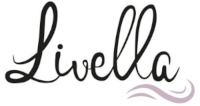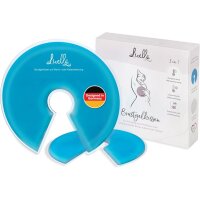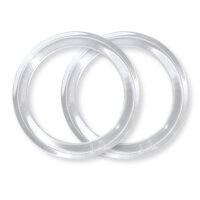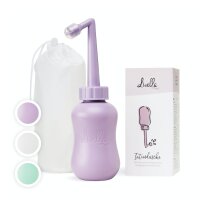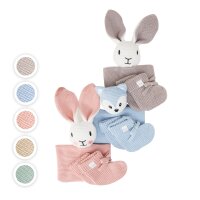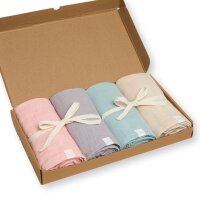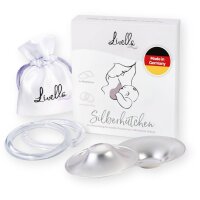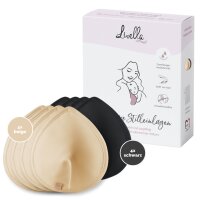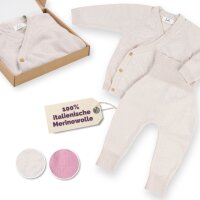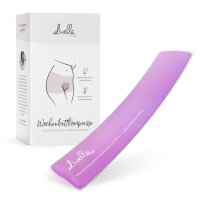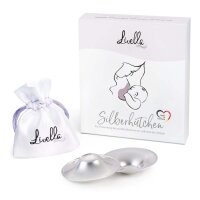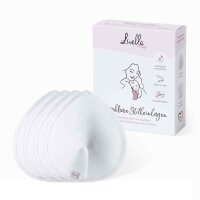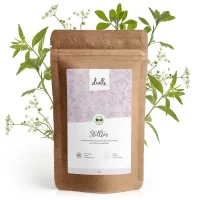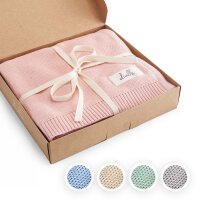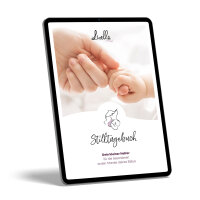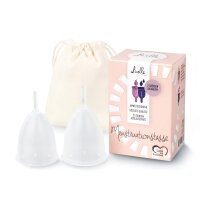It’s not uncommon for a woman’s nipples to become sore during the first few days and weeks of breastfeeding. While sore nipples can be a real nuisance, the pain gets much worse when the nipples crack open and start bleeding.
In addition to having to deal with the excruciating pain that comes with bleeding nipples when breastfeeding, many mothers are worried that it might be harmful to their baby when the blood mixes with their breast milk during feedings.
Is it normal for nipples to bleed while breastfeeding? What causes nipple bleeding when breastfeeding? And what to do if one of the nipples bleeds while breastfeeding?
Table of contents
Why are my nipples bleeding?
Bleeding nipples from breastfeeding: treatment for cracked nipples
How long do bleeding nipples take to heal?
How to prevent bleeding nipples when breastfeeding?
Can you still breastfeed if your nipples are bleeding?
Conclusion: Even with bleeding nipples breastfeeding should continue
Why are my nipples bleeding?
Bleeding nipples from breastfeeding can have many different causes. Identifying the cause of the nipple lesions is usually the first step towards successful treatment. But what causes nipples to bleed? Here is an overview of the most common causes for cracked nipples:
- Teething baby: Some babies start chewing on their mother’s nipples during breastfeeding when they get their first teeth. The friction of the teeth against the skin of the nipples causes them to become sore and to eventually crack open.
- Poor latch: Bad breastfeeding latch is one of the most common causes of nipple bleeding among breastfeeding mums. If your baby isn’t latched on properly, the nipple isn’t positioned deep enough in his or her mouth. The nipple then gets rubbed between the gums, becomes sore and, ultimately, starts bleeding.
- Bad positioning: Positioning and attachment go hand in hand. If one of them isn’t done correctly, then breastfeeding will likely lead to bleeding nipples in the end. Always check your breastfeeding position is correct, meaning that your baby isn’t too far away from your breast and that the angle allows for comfortable feeding. Your baby's head should always be level with your breast and his head and body should be in a straight line. Otherwise, the constant pulling on the nipple will lead to soreness and cracks in the skin.
- Weak suck or incorrect sucking: Nipple confusion (e. g. after the introduction of a bottle or dummy) can cause your baby to adopt a different sucking pattern that is not suited to breastfeeding. Your baby then needs to suck longer and harder at your breast to get enough milk, which puts additional strain on already sore nipples and can lead to bleeding cracks in the skin. The same can happen when your baby has a weak suck, which leads to longer and more strenuous feeding sessions.
- Oversupply of breast milk: Breast milk oversupply often leads to breast engorgement. When the breast is overly full, it’s near impossible for your baby to latch on properly and take enough breast into his or her mouth.
- Tongue-tie: Babies with tongue-tie often have trouble sucking on their mother’s breast. Due to the shortened frenulum, they are unable to position their tongue correctly and get a good latch.

Bleeding nipples from breastfeeding: treatment for cracked nipples
Breastfeeding with bleeding nipples is very painful, which is why quick relief is needed. But how do you treat bleeding nipples when breastfeeding? Here are a few tips on how to get quick relief:
- Use cold therapy: An effective measure for quick pain relief is cold therapy. Apply an ice pack or a cold breast gel pad to your nipple and wait for the pain to ease off. Be careful to never put the cool pack on the skin directly, but always wrap it in a cloth or use a protective cover to prevent ice burn.
- Consider low-level laser therapy: Low-level laser therapy is usually used for treating herpes infections or burns, but it is also gaining traction in the treatment of bleeding nipples from breastfeeding.
- Position your baby strategically to protect the wound: One way of minimising pain when breastfeeding with bleeding nipples is to position your nipple in your baby’s mouth in a way that avoids any friction and pressure on existing fissures and cracks in the skin.
- Take painkillers that are safe for breastfeeding: If you suffer from excruciating pain caused by your bleeding nipples when breastfeeding, you can take painkillers to make breastfeeding bearable. Painkillers that are safe for breastfeeding mothers include ibuprofen and paracetamol.
- Start breastfeeding on the less painful breast: A good way to reduce the pain while breastfeeding is to start feeding on the breast that is less painful. Then switch to the other breast once your baby has triggered a let-down.
- Apply a few drops of breast milk: Breast milk has natural healing properties and helps prevent infections. Apply a few drops of your own milk to your bleeding nipples and let them work their wonders while you leave your nipples out in the air.
- Use nipple creams: Nipple ointments with purified lanolin can help against bleeding nipples from breastfeeding. However, make sure to only apply a thin layer of cream and check that the product you use is paraffin-free. Otherwise, you will have to wash off any traces of the cream before the next feeding.
- Massage your breast to improve blood flow: Massaging specific areas of the breast can help increase blood flow and accelerate the healing process.
- Keep your nipples clean and dry: Good breast hygiene is crucial for preventing bacteria and germs from entering your breast through the cracks in your nipples and causing infections like mastitis or thrush. This includes always washing your hands before touching your breasts, removing baby saliva from nipples after breastfeeding, and regularly changing your nursing pads.
Bleeding nipples from breastfeeding should be treated immediately to alleviate pain and prevent early weaning. However, it’s even more important to determine the root cause of the problem. Otherwise, nipple bleeding could turn into a recurring problem.
How long do bleeding nipples take to heal?
How long it takes for bleeding nipples to heal depends on various factors, the first one being the size and depth of the wound. Deep cracks in the skin naturally take longer to heal than superficial injuries.
Then there is the mother's state of health to consider. A healthy, well-rested body is capable of closing wounds faster than a body that is weakened by lack of sleep or bad nutrition. A healthy breastfeeding diet combined with plenty of sleep and rest improves the chances of quick wound healing.
Depending on the severity of the nipple lesion and the mother’s state of health, it can take up to 2 or 3 weeks until bleeding nipples from breastfeeding have healed.

How to prevent bleeding nipples when breastfeeding?
It’s very uncomfortable for mothers to suffer from bleeding nipples when breastfeeding, which is why nipple pain is often the reason why women stop breastfeeding early. The best approach is therefore to avoid sore or cracked nipples right from the beginning.
Here are a few tips for preventing nipple-related breastfeeding pain:
- Make sure your baby latches on correctly: Good breastfeeding latch is the most important measure to prevent bleeding nipples from breastfeeding. A good latch ensures that the nipple is well-positioned in your baby’s mouth and doesn’t get pinched between your baby’s jaw and palate.
- Break the suction before you unlatch: Not breaking the suction of a breastfeeding latch before taking your baby off the breast is a mistake many new mothers make. Instead of pulling your baby away from the breast while he or she is still firmly latched on, you should insert a finger into the corner of your baby’s mouth and gently press down on the lower jaw to get your baby to release your breast.
- Switch between different breastfeeding positions regularly: Always breastfeeding in the same position means that it’s always the same area around the nipple that is under the strain of your baby’s sucking and usually ends up becoming sore and starting to bleed. To avoid this, you should breastfeed your baby in different positions.
- Don’t try to increase your milk supply artificially: Many mothers try to prevent low milk supply by additionally pumping breast milk between feeds. Additional pumping suggests to the body that more milk is needed, which increases milk supply to a level that exceeds the amount that is actually needed for the baby. When the breasts become too full, it’s harder for your little one to latch on properly, which increases the risk of bleeding nipples from breastfeeding.
- Avoid bottle-feeding or using dummies: The use of dummies and the introduction of bottle-feeding often lead to nipple confusion. Nipple confusion is when the baby’s sucking pattern and technique change to adapt to the artificial teat, which can negatively impact your baby’s ability to breastfeed properly. To prevent this from happening, avoid giving bottles and dummies.
- Use silver nursing cups: Silver nursing cups can help prevent cracked and bleeding nipples. They are small silver cones that are placed on the nipples between feeds and protect sore nipples against friction and external pressure so that they can heal better. Additionally, they hold back leaking drops of breast milk which creates a moist environment in which the wounds can heal even faster.
Can you still breastfeed if your nipples are bleeding?
Many mothers are alarmed when pinkish-red milk starts running out of the corners of their baby’s mouth. However, there is no need to worry. Even if you are bleeding from the nipple while breastfeeding, it will not harm your baby. Ingesting small amounts of blood through breast milk is not dangerous for your little one.
As long as your baby doesn’t refuse the breast because of the changed taste of the milk, there is no reason to stop breastfeeding. If, however, your baby starts vomiting because your nipple is bleeding while breastfeeding, you should put breastfeeding on hold until your nipples have healed.
Make sure to continue emptying your breast on a regular basis to keep your milk production up and avoid breast engorgement or mastitis while you’re not breastfeeding. You can give the extracted breast milk to your baby via spoon- or cup-feeding.
Bleeding nipples when breastfeeding can be very painful. But try not to let the pain discourage you and keep offering your little one the breast for as long as you can. If you suffer from excruciating pain, take painkillers to reduce the pain to a level that is bearable. Since painkillers are only a short-term solution, it’s important to find out what causes your nipples to bleed. Seeking help from a midwife or a lactation consultant is usually the best way to quickly identify the problem and solve it. Check out this list of useful links to find out where to get professional support.
Conclusion: Even with bleeding nipples breastfeeding should continue
Bleeding nipples from breastfeeding can be very painful and are often the reason why women decide to wean their baby early. Nipple lesions should be treated immediately to avoid the pain having a negative impact on the breastfeeding relationship between a mother and her baby.
There are different ways to treat bleeding nipples when breastfeeding, including cold therapy to soothe sore areas, and good breast hygiene to prevent infection. While treatment can provide some temporary pain relief, it’s important to determine why the mother’s nipples become so sore that they start bleeding.
This is where midwives or lactation consultants can provide support. They can check your breastfeeding latch and position and monitor your breastfeeding management to see why you suffer from bleeding nipples when breastfeeding.
In the meantime, you can safely continue breastfeeding your baby despite your bleeding nipples. Blood from cracked nipples is not harmful to infants, which is why you should only stop breastfeeding if the pain is too much to handle or if the cracks in your skin simply won’t heal.
References
- Nipple Confusion - La Leche League GB
- Sore or cracked nipples when breastfeeding - NHS (www.nhs.uk)
- Common breastfeeding challenges | Office on Women's Health (womenshealth.gov)
- Sore Nipples - La Leche League USA (lllusa.org)
- Efficacy of Low-Level Laser Therapy in Relieving Nipple Pain in Breastfeeding Women: A Triple-Blind, Randomized, Controlled Trial (daneshyari.com)
- Nipple Pain - La Leche League GB
- Breastfeeding: Preventing sore nipples - Food & Health (msu.edu)
- Cracked Nipples and Moist Wound Healing - The Breastfeeding Network
- Blutige Brustwarzen beim Stillen | Livella.de
